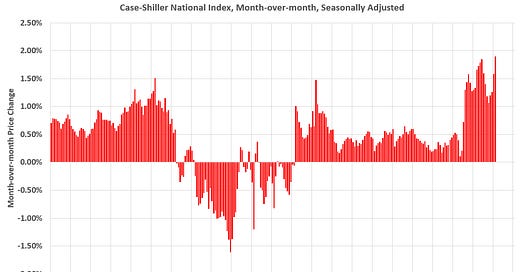Case-Shiller National Index up 19.8% Year-over-year in February; New Record Monthly Increase
FHFA: "House prices rose to set a new historical record in February"
Both the Case-Shiller House Price Index (HPI) and the Federal Housing Finance Agency (FHFA) HPI for February were released today. Here is a graph of the month-over-month (MoM) change in the Case-Shiller National Index Seasonally Adjusted (SA).
Note that for the Case-Shiller Home Price Indices "February" is a 3-month average of December, January and Feb…
Keep reading with a 7-day free trial
Subscribe to CalculatedRisk Newsletter to keep reading this post and get 7 days of free access to the full post archives.



